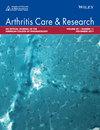Improving Identification of At-Risk Behaviors in Adolescents With Rheumatic Disease
Abstract
Objective
Many adolescent patients view their rheumatologist as their primary physician, and therefore it is important to screen youth for sexual activity and substance use as recommended by the American Academy of Pediatrics. We implemented an electronic social history questionnaire (SHQ) and alert system to identify at-risk behaviors in adolescents with rheumatic disease.
Methods
The SHQ was administered to adolescents 14 years and older with a goal to survey patients’ sexual activity and alcohol, tobacco, and drug use. The SHQ was given via tablet at each rheumatology outpatient visit. A positive response triggered a best practice advisory (BPA) alert when the chart was opened to remind the clinician to discuss these results privately.
Results
A total of 877 unique patients were surveyed. Ninety patients (12%) reported being sexually active, and sexually active patients were significantly older than those who were not (17.2 vs 15 years; P < 0.001). Seventy-two percent of patients were female, and the mean age was 15.8 years. Sexually active patients were more likely to be smokers, to drink alcohol, and to use other drugs (P < 0.001). Strong associations were observed between alcohol use and male sex (P = 0.0227), White race (P = 0.0052), and public insurance (P = 0.0021).
Conclusion
Overall, 12% of patients reported being sexually active, underscoring the need to screen adolescents for sexual activity given many rheumatology patients take teratogenic medication. A smaller proportion used substances. Implementing an electronic medical record–based SHQ can help identify patients most at risk, and the BPA serves as a useful tool to remind clinicians to discuss the SHQ privately.

 求助内容:
求助内容: 应助结果提醒方式:
应助结果提醒方式:


